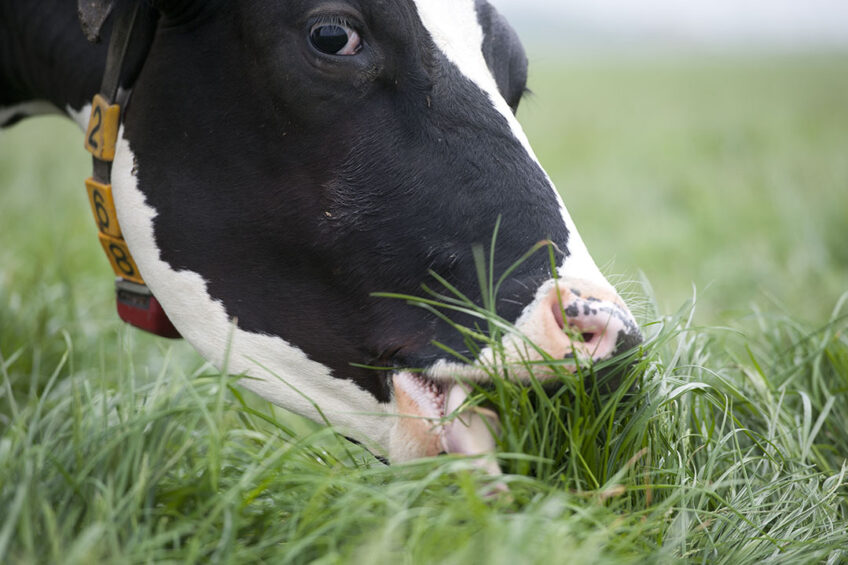How to deal with low grass yields for dairy cows

Dairy farmers need to deal with poorer grass and silage yields influenced by the contrasts in recent weather patterns. The different climates have had a detrimental effect on grass growing rates forcing dairy farmers to think fast to make compensatory arrangements.
Many farmers across Europe have endured a very wet February superseded by what are now very dry conditions. Both of these climates have had a major effect on grass growing rates.
Low rainfall totals have already had a major impact on reduced grazing availability and some drought-like conditions are now likely to have serious implications on winter fodder stocks as yields are very low.
For example, Northern Ireland is well known for its wetter climate but across the country as a whole, the May rainfall in 2020 totalled just 42% of the 1981-2010 average.

Alleviate problems for dairy farmers
However, there are a number of actions dairy farmers anywhere can take to help alleviate the problems associated with slow grass growth as Conail Keown, an advisor at the College of Agriculture, Food and Rural Enterprise (CAFRE) in Northern Ireland has set out.
He said: “Firstly, farmers should target the best forage to the most productive animals on the farm. Youngstock can be fed outside with poorer quality feeds and supplemented with purchased fibre sources such as soya hulls or straw.
“Also, farmers should continue to sow fertiliser on the grazing rotation. This can be sowed ahead of the cows on paddocks to allow for more moisture in the sward at sowing. If fertiliser is still visible on the top of the ground from the last application then stop sowing.
“The pre-cutting of grazing paddocks in this weather can lead to very high dry matter grass and will mean that cows will drink additional water. This practice will also lead to lower exiting covers and slower recovery of the sward.
“Therefore, adjust concentrate supplementation rates to take account of your forage situation. M+ rates in computerised milking parlours should be reduced based on grass supply and forage supplementation.
“Farmers should also bring additional grazing area into the rotation but should be careful not to graze their potential winter fodder supply and avoid grazing very low covers in short rotations. Topping should be stopped so that there is some cover on paddocks which may help to shade new re-growth.
“In addition, dry cows off early at the end of lactation and remove them from the grazing platform. Then, sell surplus stock including cows that have been ear marked for culling, surplus youngstock or beef animals,” he added.
Applying water to land can be a benefit to gain increased growth but depending on the area, official licences may be required to access water.
Conail said: “Irrigating grassland may require a water abstraction licence. It takes 22,200 gallons applied per acre to be equivalent to 25mm of rain.
“And, feed mixed rations twice per day in warm weather to fully housed cows to ensure silage remains fresh.
“Milk yields should also be monitored continually as should dry matter intakes, concentrate feed levels and oestrus behaviour. If changes are required to address problems, then make them quickly to maintain milk yields and herd profitability.
“On farms where grass growth is much reduced, source additional forage locally or purchase fodder replacement type rations. Compare value for money based on dry matter, energy and protein content.
“Wholecrop cereals purchased from arable farmers may be a possibility for reducing the winter fodder gap but be careful to assess the quality of this and its yield. Ideally purchase this type of crop by the tonne rather than per acre to ensure it is value for money.
“Farmers can half the grass demand by feeding 6 to 8 kg dry matter intake of silage and work with 12 hour grazing blocks so ensuring the maximum amount of time for regrowth,” he said.
The advice for the spreading of slurry was only to apply it with care in extremely dry conditions. Light coatings of watery slurry should be applied with a trailing shoe/hose if possible. This can be done when there is some grass cover rather than applying to recently cut swards. Again, continually monitor the situation and take action early, is the general advice.
Conail added: “In fact, it is essential that action is taken sooner rather than later to ensure a grass shortage now does not become a fodder shortage for your herd in the coming winter.
“Smaller changes made now and implemented over a longer period can mount into a substantial saving in the amount of forage required by the herd.”
Join 13,000+ subscribers
Subscribe to our newsletter to stay updated about all the need-to-know content in the dairy sector, two times a week.










